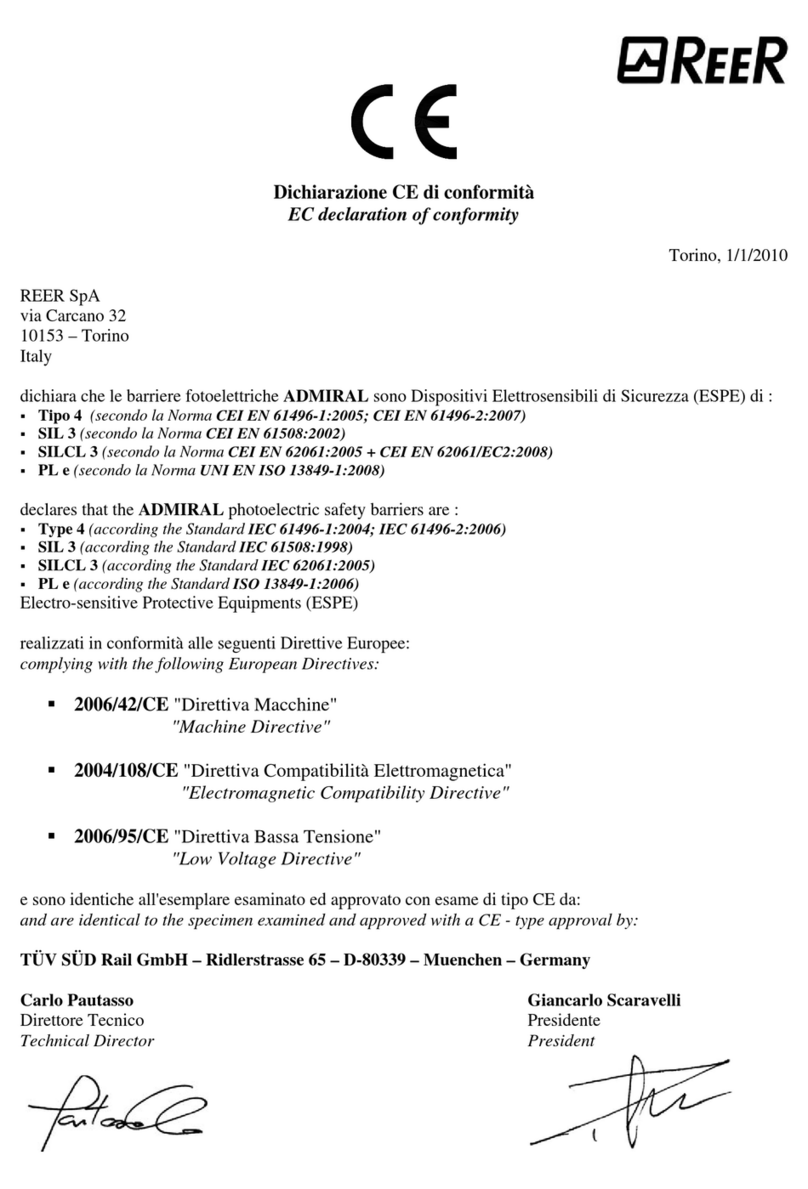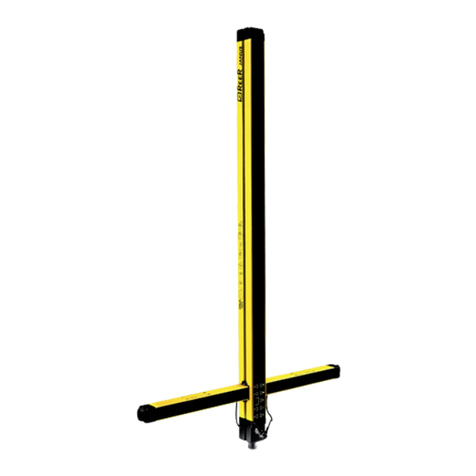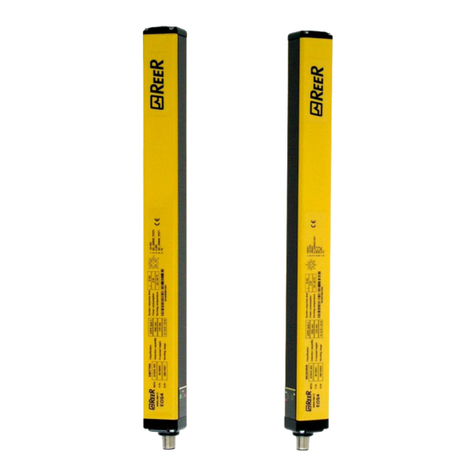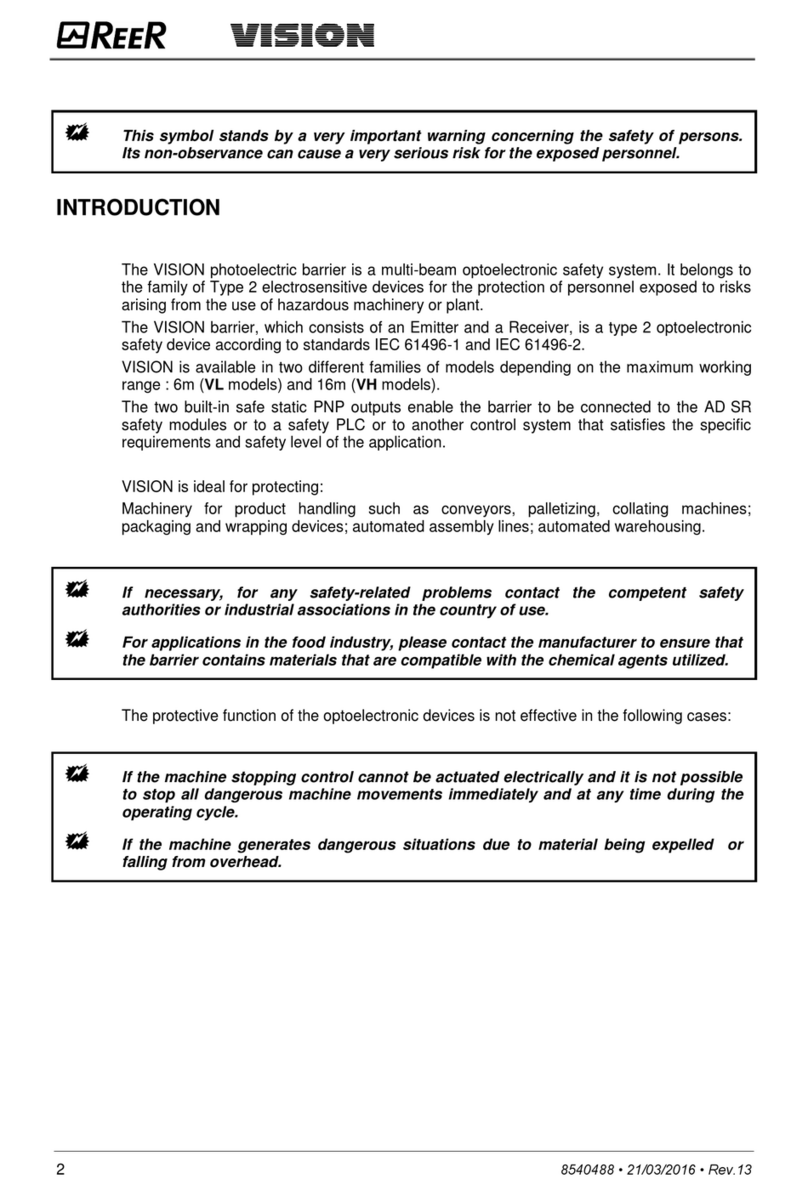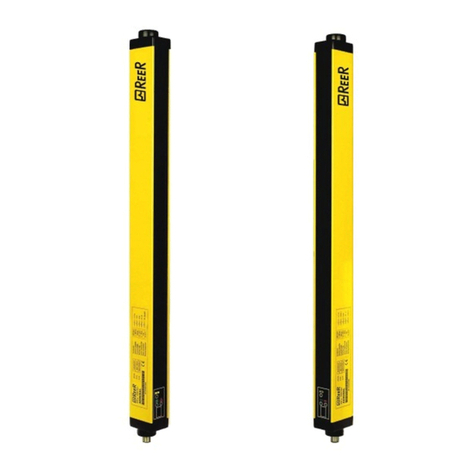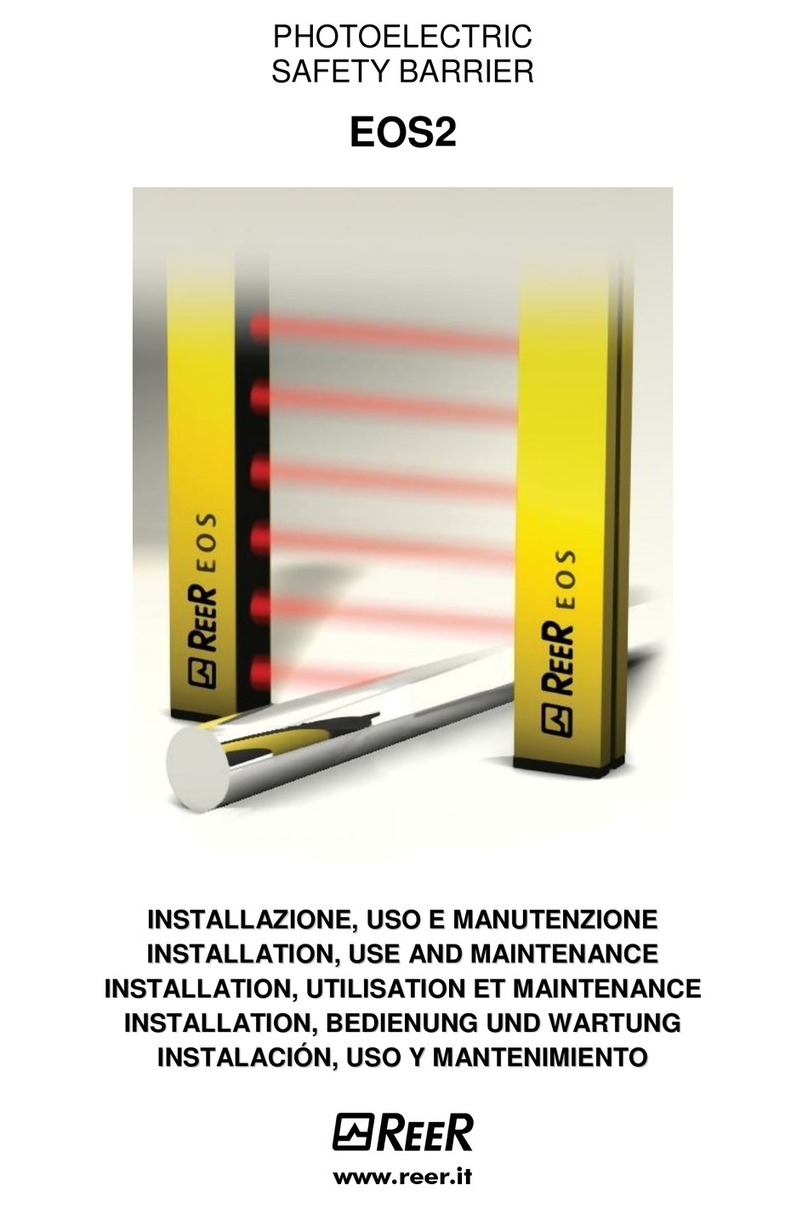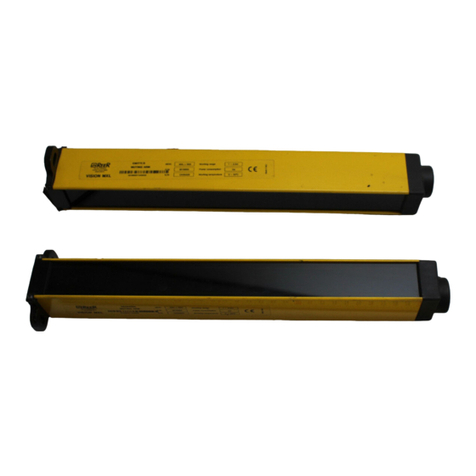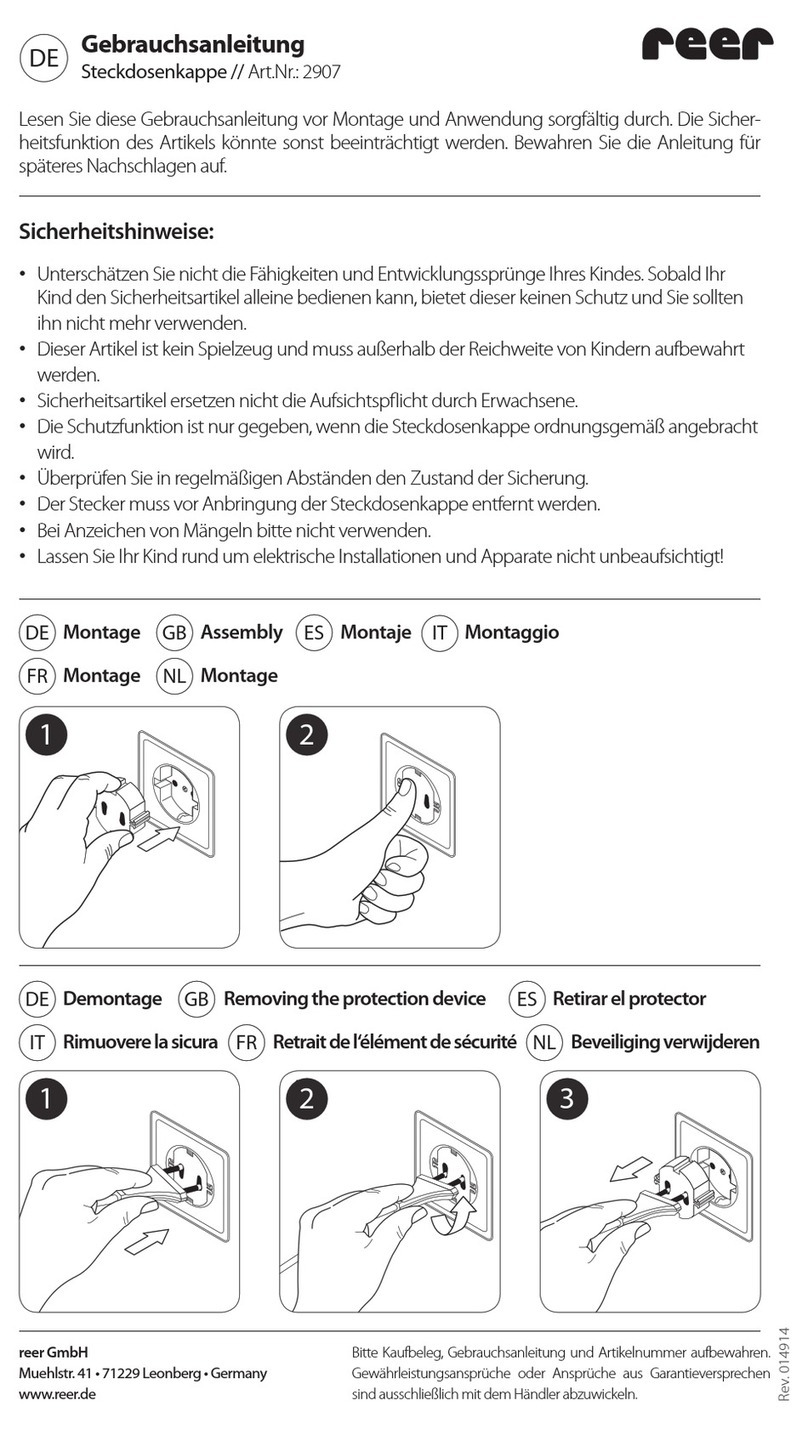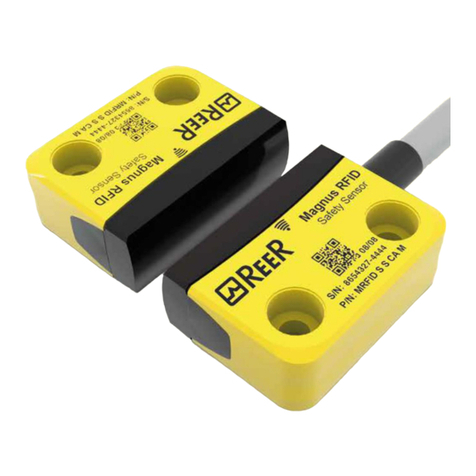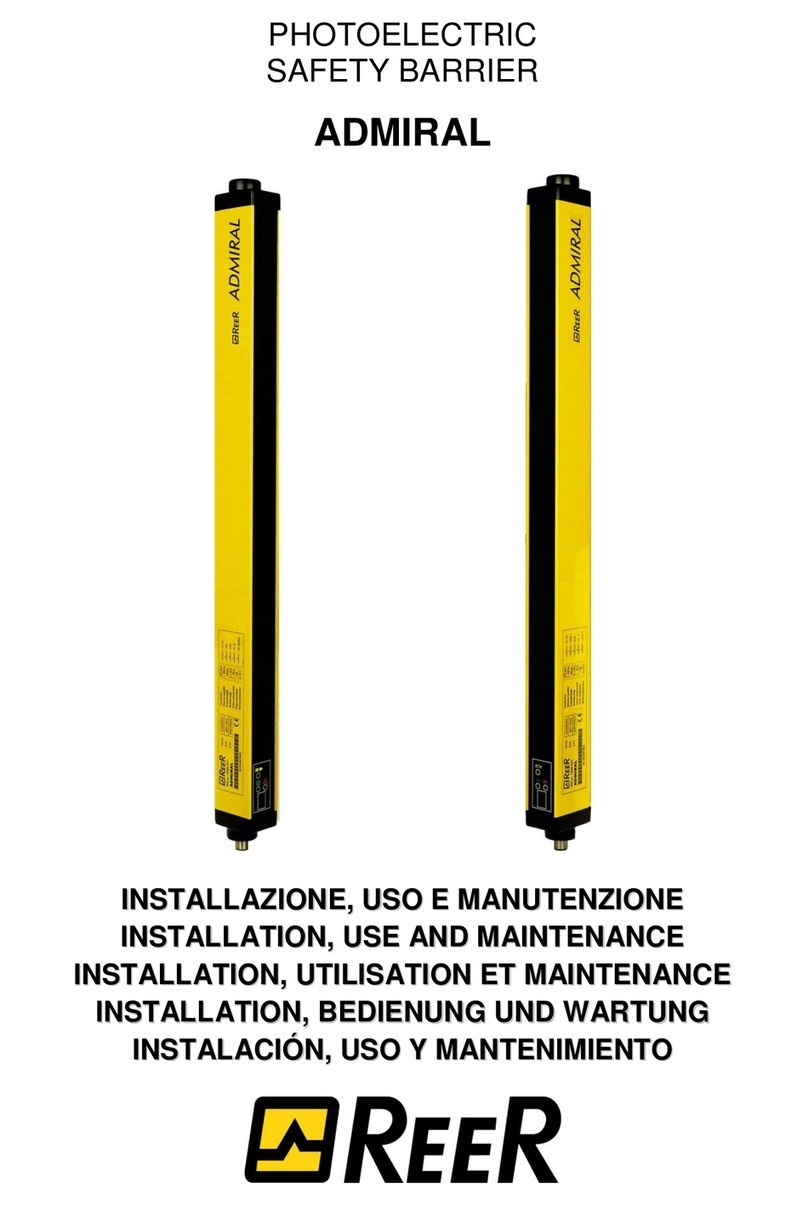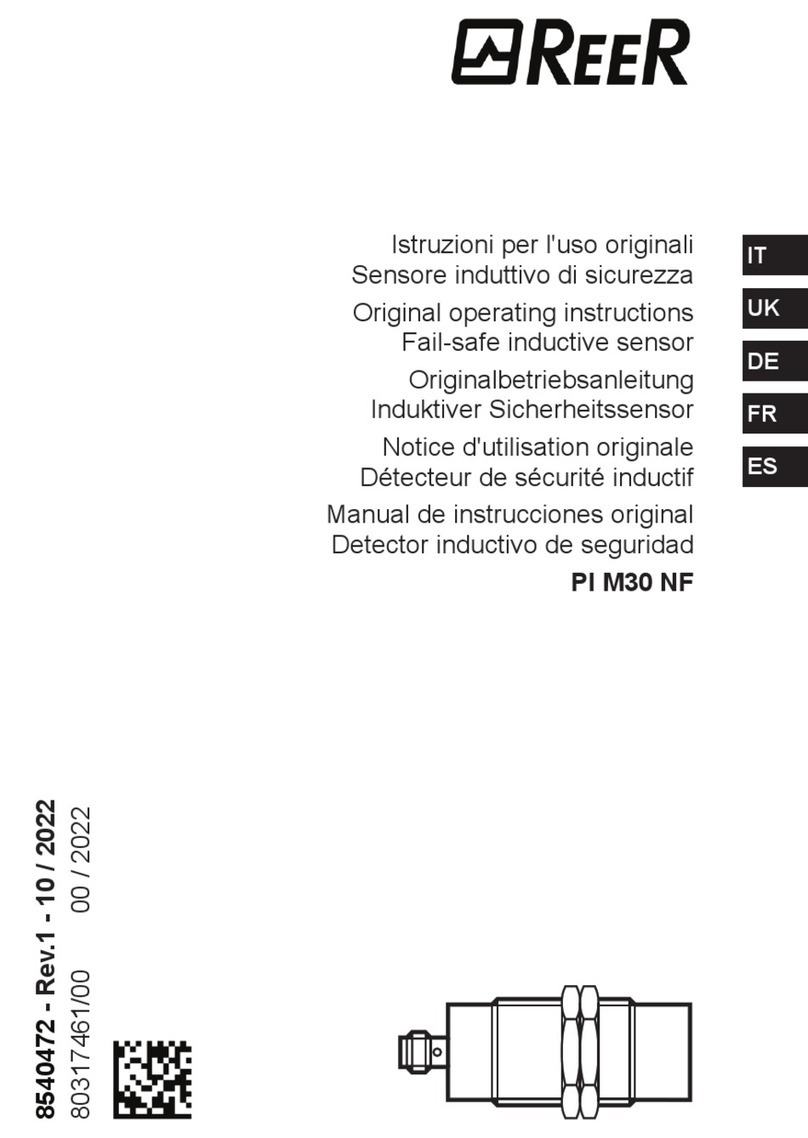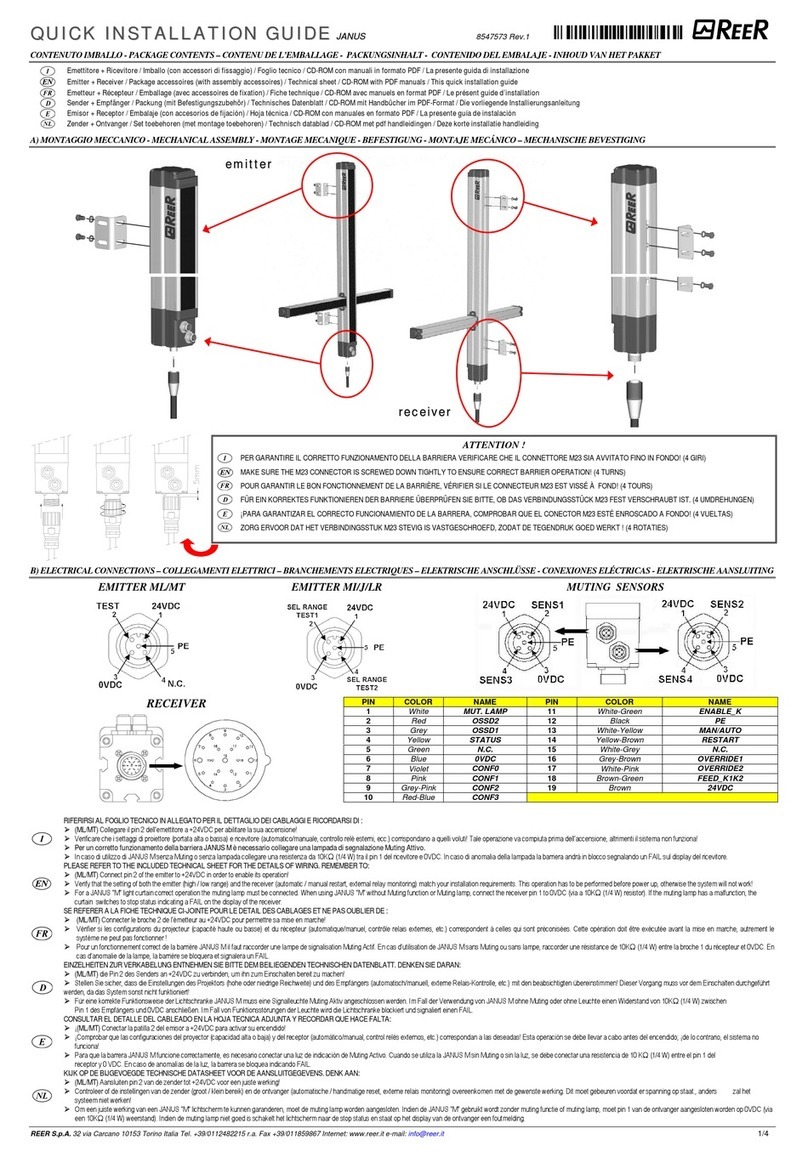EOS2 SAFETY LIGHT CURTAIN
1
English
S
SA
AF
FE
ET
TY
Y
L
LI
IG
GH
HT
T
C
CU
UR
RT
TA
AI
IN
N
E
EO
OS
S2
2
SUMMARY
INTRODUCTION.................................................................................................................................................3
PRINCIPLE OF OPERATION ...........................................................................................................................4
INSTALLATION ................................................................................................................................................... 5
Positioning ........................................................................................................6
Master/Slave Positioning....................................................................................7
Calculation of safety distance ............................................................................8
Multiple systems................................................................................................9
Use of deflecting mirrors .................................................................................10
Distance from reflective surfaces .....................................................................11
Mechanical assembly and optical alignment.....................................................12
Vertical positioning of the light curtain............................................................13
Models with 30, 40mm resolution ................................................................13
Models with 50, 90mm resolution ................................................................13
Multibeam Models ........................................................................................14
Horizontal positioning of the light curtain .......................................................14
Electrical connections ......................................................................................15
Layout of the connectors on MASTER/SLAVE light curtain .............................15
Emitter connections......................................................................................16
Receiver connections ....................................................................................17
Warnings regarding connection cables..........................................................18
Configuration and operating modes (Master Models / With integrated control
functions) ........................................................................................................19
Automatic operation.....................................................................................19
Manual operation..........................................................................................19
Connection of external contactors K1 and K2 ...............................................20
Examples of connection with REER safety modules .......................................21
OPERATION AND TECHNICAL DATA .................................................................................................... 22
Light signals ....................................................................................................22
Emitter light signals......................................................................................22
Receiver light signals....................................................................................22
Internal TEST function......................................................................................23
Periodical system TEST ....................................................................................23
Status of the outputs .......................................................................................23
Technical specifications ...................................................................................24
Dimensions......................................................................................................26
CHECKOUTS AND MAINTENANCE.......................................................................................................... 27
Checking of light curtain efficiency..................................................................27
Troubleshooting ..............................................................................................29
Accessories/Spares ..........................................................................................31
GUARANTEE...................................................................................................................................................... 32
8540738 • 2nd December 2009 • Rev.2
